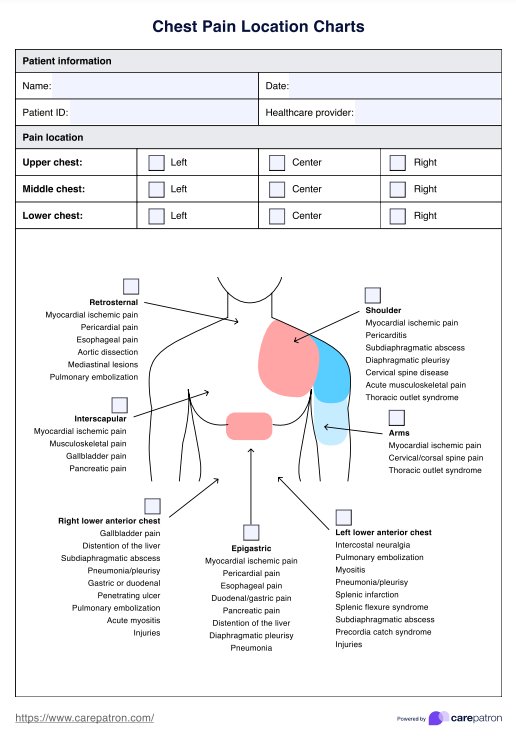Concerning chest pain is often felt in the center or left side of the chest and may radiate to the jaw, neck, shoulder, or arm. Pain in these areas, especially when accompanied by shortness of breath or sweating, can indicate acute coronary syndrome or another cardiac emergency.

Chest Pain Location Charts
Learn how Chest Pain Location Charts help identify the cause of chest pain by mapping discomfort patterns and guiding accurate clinical diagnosis.
Chest Pain Location Charts Template
Commonly asked questions
The 3 P’s—Pleuritic, Positional, and Palpable—help differentiate noncardiac causes of chest pain. If pain is pleuritic (worse with breathing), positional (changes with posture), or palpable (tender to touch), it’s less likely to be cardiac in origin.
Chest pain is confirmed and evaluated through a combination of clinical assessment, ECG, cardiac biomarkers, and imaging tests. These investigations help determine whether the pain is due to cardiac ischemia, pulmonary issues, or other underlying causes.
EHR and practice management software
Get started for free
*No credit card required
Free
$0/usd
Unlimited clients
Telehealth
1GB of storage
Client portal text
Automated billing and online payments











